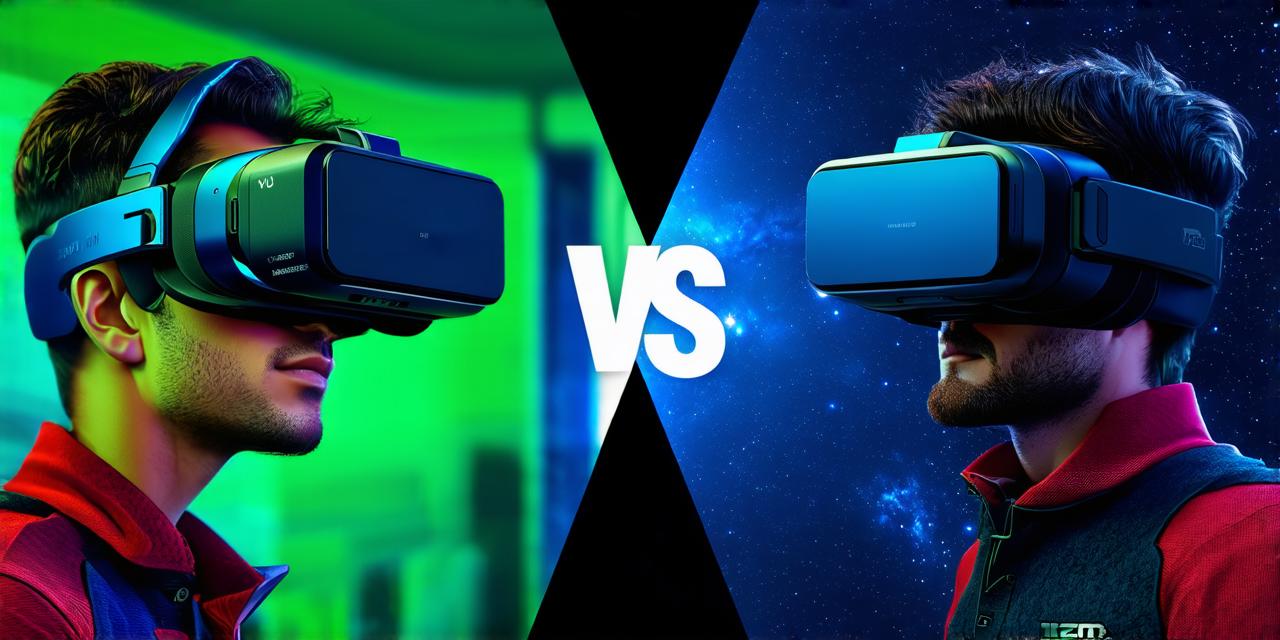Virtual Reality (VR) and Mixed Reality (MR): Differences, Advantages, Disadvantages, Real-life Examples, and FAQs
Virtual Reality (VR) and Mixed Reality (MR) are two emerging technologies that have gained significant attention in recent years. While both technologies offer immersive experiences, they differ in their approach to achieving this immersion.
What is Virtual Reality?
Virtual reality is a computer-generated simulation of a 3D environment that can be interacted with using specialized equipment such as a headset, gloves, and controllers. The aim of VR is to create an artificial world that the user can experience in real-time. The technology has been around for several years but has only recently become more accessible and affordable due to advancements in technology.
What is Mixed Reality?
Mixed reality, on the other hand, combines real-world environments with virtual objects. MR allows users to interact with both physical and digital content in a hybrid experience that can be accessed through a smartphone or tablet. While MR has been around for a while, it is only now starting to gain traction as technology becomes more advanced.
Advantages of Virtual Reality
Virtual reality offers several advantages over mixed reality. Firstly, VR provides a completely immersive experience where the user feels like they are in another world. This can be especially useful for gaming and entertainment applications. Secondly, VR allows for more precise tracking of movements, which makes it ideal for training simulations and medical procedures. Finally, VR is highly customizable, allowing developers to create unique experiences tailored to specific use cases.
Disadvantages of Virtual Reality
While VR has its advantages, it also has some disadvantages. Firstly, VR can be expensive, especially for high-end equipment such as headsets and computers. Secondly, VR requires a dedicated space where the user can move around freely without bumping into obstacles. Finally, VR can cause motion sickness in some people, which can be a significant barrier to adoption.
Advantages of Mixed Reality
Mixed reality offers several advantages over virtual reality. Firstly, MR is more accessible and affordable than VR, making it ideal for small businesses and startups. Secondly, MR blends real-world environments with virtual objects, allowing users to interact with both in a natural way. Finally, MR can be accessed through a smartphone or tablet, making it highly portable and versatile.
Disadvantages of Mixed Reality
Mixed reality also has its disadvantages. Firstly, MR is not as immersive as VR, which can limit its usefulness for gaming and entertainment applications. Secondly, MR requires a clear line of sight to the virtual objects, which can be challenging in complex environments such as construction sites. Finally, MR may not be suitable for training simulations that require high levels of accuracy or precision.
Real-life Examples
Virtual reality has been used in a variety of real-life applications, including gaming, education, and healthcare. For example, VR is being used to treat phobias by exposing patients to their fears in a safe and controlled environment. VR is also being used in medical training simulations to teach doctors how to perform complex procedures with precision and accuracy.
Mixed Reality Applications
Mixed reality has been used in a variety of applications as well, including marketing, advertising, and education. For example, MR is being used by architects to visualize and test designs before they are built, saving time and money in the process. MR is also being used in education to provide students with interactive and engaging learning experiences.
FAQs
What is the difference between virtual reality and mixed reality?
Virtual reality creates an artificial environment that the user can interact with using specialized equipment, while mixed reality blends real-world environments with virtual objects.
Which technology is better for gaming?
Virtual reality is generally better for gaming due to its ability to provide a completely immersive experience.
Is mixed reality more accessible and affordable than virtual reality?
Yes, mixed reality is more accessible and affordable than virtual reality, making it ideal for small businesses and startups.
Which technology is better for training simulations?
Virtual reality is generally better for training simulations due to its ability to provide high levels of accuracy and precision.
Summary
In conclusion, both virtual reality and mixed reality have their advantages and disadvantages. VR is better for gaming and applications that require a completely immersive experience, while MR is more accessible and affordable, making it ideal for small businesses and startups. Ultimately, the choice between VR and MR will depend on the specific use case and requirements of the application. As technology continues to advance, we can expect both VR and MR to become even more sophisticated and versatile, opening up new possibilities for immersive experiences.
